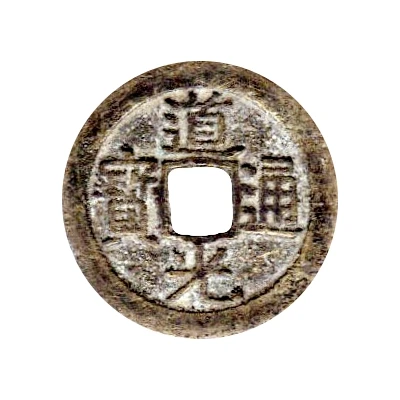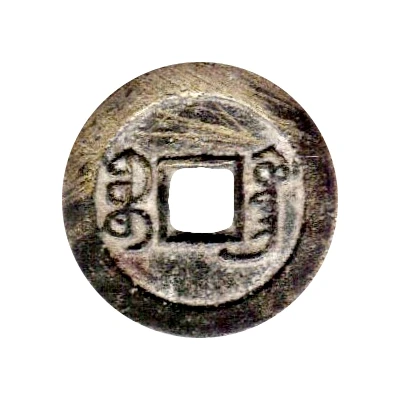1 Cash - Daoguang Tongbao; Boo-kiyan ND
| Brass | 4.17 g | 24 mm |
| Issuer | Empire of China |
|---|---|
| Emperor | Qing dynasty › Daoguang (道光帝) (1820-1850) |
| Type | Standard circulation coin |
| Years | 1821-1850 |
| Value | 1 Cash |
| Currency | Cash (621-1912) |
| Composition | Brass |
| Weight | 4.17 g |
| Diameter | 24 mm |
| Thickness | 1.0 mm |
| Shape | Round with a square hole |
| Technique | Cast |
| Orientation | Medal alignment ↑↑ |
| Demonetized | Yes |
| Updated | 2024-10-03 |
| Numista | N#28093 |
|---|---|
| Rarity index | 82% |
Reverse
Two Manchu words (read vertically) separated by the hole.
Script: Mongolian / Manchu
Lettering: ᠪᠣᠣ ᡴᠶᠠᠨ᠋
Translation: Boo-kiyan
Edge
Plain
Comment
Mints were located at Guiyang and Dading, and were closed between 1823 and 1824, as well as 1838 and 1843.DocTongHead
Interesting fact
One interesting fact about the Standard circulation coin 1 Cash - Daoguang (Tongbao; Boo-kiyan) ND (1821-1850) from Empire of China made of Brass weighing 4.17 g is that it was used as a form of currency during the Daoguang Emperor's reign, who was known for his efforts to modernize China and open it up to foreign trade. Despite his efforts, the coinage during his reign was still made of brass, which was a less valuable metal than other metals used in coinage at the time. This coin is a representation of the economic and technological advancements that were taking place in China during this time period.

